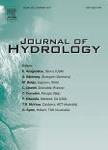版权所有:内蒙古大学图书馆 技术提供:维普资讯• 智图
内蒙古自治区呼和浩特市赛罕区大学西街235号 邮编: 010021

作者机构:Korea Inst Civil Engn & Bldg Technol Dept Water Resources & Environm Res Water Resources Res Div Goyang South Korea Wageningen Univ Hydrol & Quantitat Water Management Grp Dept Environm Sci NL-6700 AP Wageningen Netherlands UFZ Helmholtz Ctr Environm Res Leipzig Germany Deltares NL-2600 MH Delft Netherlands Kyoto Univ Dept Civil & Earth Resources Engn Kyoto 6068501 Japan
出 版 物:《JOURNAL OF HYDROLOGY》 (水文学杂志)
年 卷 期:2014年第519卷第PartD期
页 面:2707-2721页
核心收录:
学科分类:08[工学] 0708[理学-地球物理学] 081501[工学-水文学及水资源] 0815[工学-水利工程] 0814[工学-土木工程]
基 金:Korea Institute of Civil Engineering and Building Technology Supercomputing Center/Korea Institute of Science and Technology Information [KSC-2013-C3-031] Korea Meteorological Administration Research and Development Program [CATER 2012-3090]
主 题:Streamflow forecasting Rainfall ensemble generator Lagged particle filtering Numerical weather prediction Distributed hydrologic model
摘 要:We investigate the effects of noise specification on the quality of hydrological forecasts via an advanced data assimilation (DA) procedure using a distributed hydrological model driven by numerical weather predictions. The sequential DA procedure is based on (1) a multivariate rainfall ensemble generator, which provides spatial and temporal correlation error structures of input forcing, and (2) lagged particle filtering to update past and current state variables simultaneously in a lag-time window to consider the response times of internal hydrologic processes. The procedure is evaluated for streamflow forecasting of three flood events in two fast-responding catchments in Japan (Maruyama and Katsura). The rainfall ensembles are derived from ground-based rain gauge observations for the analysis step and numerical weather predictions for the forecast step. The ensemble simulation performs multi-site updating using information from the streamflow gauging network and considers the artificial effects of reservoir release. Sensitivity analysis is performed to assess the impacts of noise specification in DA, comparing a different setup of random state noise and input forcing with/without multivariate conditional simulation (MCS) of rainfall ensembles. The results show that lagged particle filtering (LPF) forced with MCS provides good performance with small and consistent random state noise, whereas LPF forced with Thiessen rainfall interpolation requires larger random state noise to yield performance comparable to that of LPF + MCS for short lead times. (C) 2014 Elsevier B.V. All rights reserved.